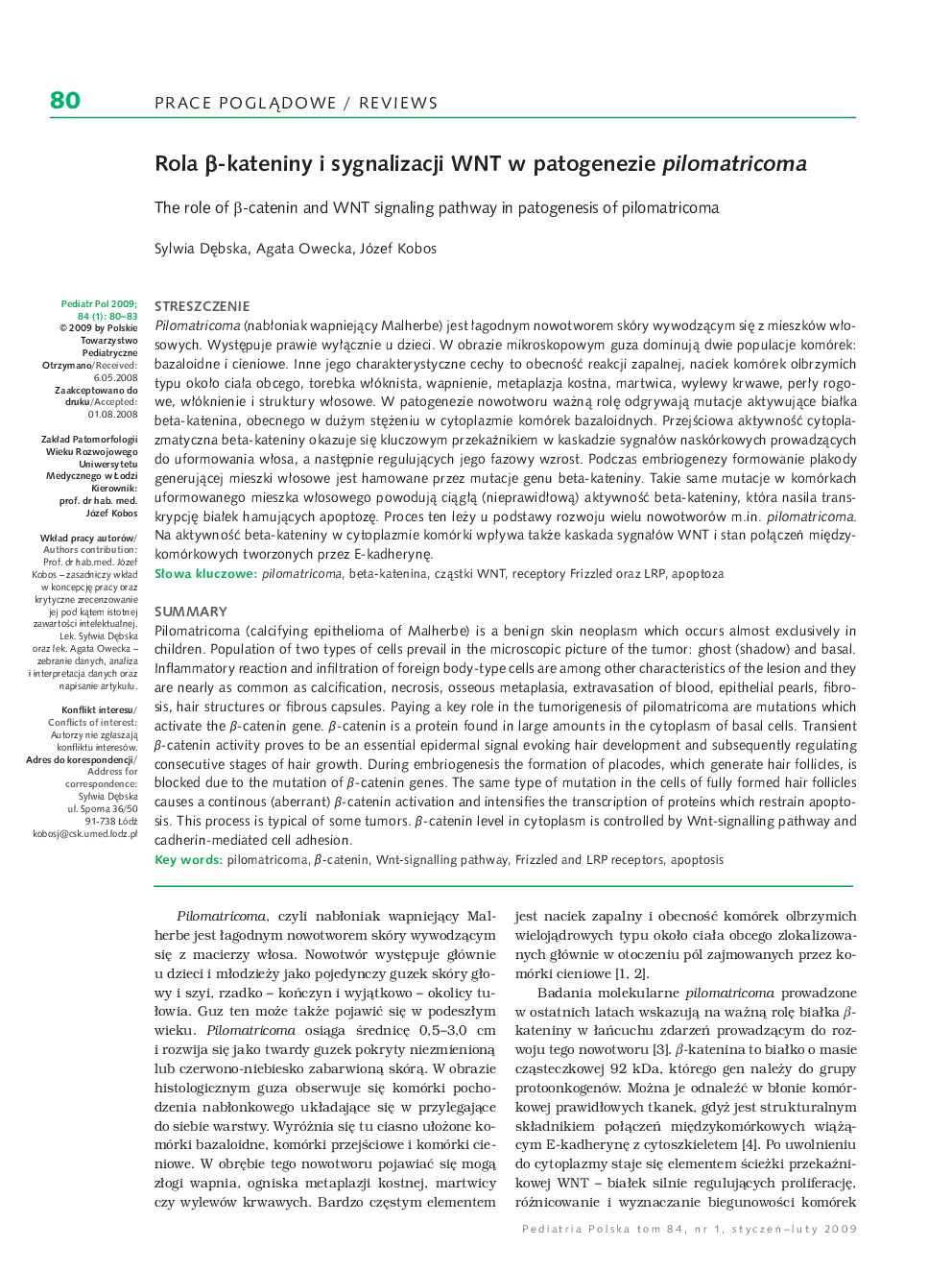| Article ID | Journal | Published Year | Pages | File Type |
|---|---|---|---|---|
| 2675611 | Pediatria Polska | 2009 | 4 Pages |
Abstract
Pilomatricoma (calcifying epithelioma of Malherbe) is a benign skin neoplasm which occurs almost exclusively in children. Population of two types of cells prevail in the microscopic picture of the tumor: ghost (shadow) and basal. Inflammatory reaction and infiltration of foreign body-type cells are among other characteristics of the lesion and they are nearly as common as calcification, necrosis, osseous metaplasia, extravasation of blood, epithelial pearls, fibrosis, hair structures or fibrous capsules. Paying a key role in the tumorigenesis of pilomatricoma are mutations which activate the β-catenin gene. β-catenin is a protein found in large amounts in the cytoplasm of basal cells. Transient β-catenin activity proves to be an essential epidermal signal evoking hair development and subsequently regulating consecutive stages of hair growth. During embriogenesis the formation of placodes, which generate hair follicles, is blocked due to the mutation of β-catenin genes. The same type of mutation in the cells of fully formed hair follicles causes a continous (aberrant) β-catenin activation and intensifies the transcription of proteins which restrain apoptosis. This process is typical of some tumors. β-catenin level in cytoplasm is controlled by Wnt-signalling pathway and cadherin-mediated cell adhesion.
Related Topics
Health Sciences
Medicine and Dentistry
Dermatology
Authors
Sylwia DÄbska, Agata Owecka, Józef Kobos,
